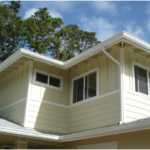As sustainability becomes an increasingly important aspect of modern life, many homeowners, businesses, and sports facilities are looking for eco-friendly alternatives to traditional landscaping. One of the most popular options is synthetic turf, also known as artificial grass. While it may not be the natural green lawn that many are accustomed to, synthetic turf offers a variety of environmental benefits that make it a viable and sustainable choice. This article will delve into the environmental advantages of opting for synthetic turf over natural grass.
Water Conservation: The Environmental Benefits of Synthetic Turf
One of the most significant environmental benefits of synthetic turf is water conservation. Natural grass lawns require regular watering to stay green and healthy, especially in arid and semi-arid regions. In many parts of the world, water is a precious resource, and excessive watering can lead to shortages, increased costs, and environmental degradation. Artificial grass, as a form of synthetic turf, eliminates the need for regular irrigation, drastically reducing water consumption.
This conservation is especially beneficial in drought-prone areas where water restrictions may be in place. By installing synthetic turf, homeowners and businesses can save thousands of gallons of water each year. The reduction in water usage not only helps the environment but also results in lower water bills, making synthetic turf a cost-effective solution.
Benefits of Water Conservation
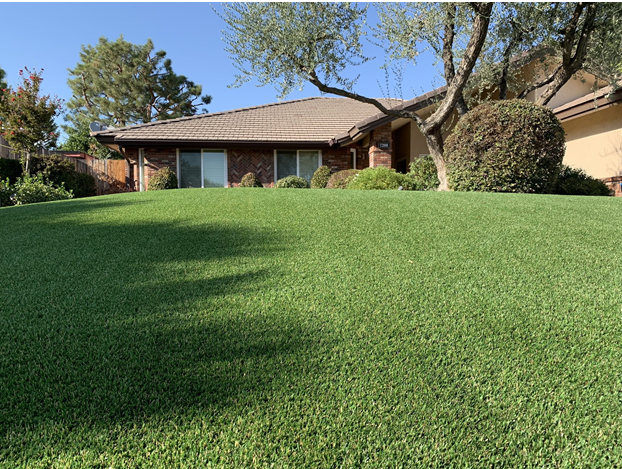
Water conservation is an essential aspect of maintaining a sustainable environment. By reducing water usage, we can help preserve this precious resource for future generations. Artificial turf is an excellent option for water conservation, as it requires significantly less water than natural grass. In fact, artificial turf can save up to 50% of water usage compared to natural grass. This is especially beneficial in areas with water shortages or droughts. Additionally, artificial turf reduces the need for frequent watering, which can help lower water bills and minimize the strain on local water resources.
Reduced Use of Pesticides and Fertilizers with Artificial Turf
Maintaining a natural grass lawn often involves the use of pesticides, herbicides, and fertilizers to keep it looking lush and green. These chemicals can have detrimental effects on the environment, contaminating groundwater, harming local wildlife, and contributing to soil degradation. An artificial lawn, on the other hand, does not require any of these chemicals to maintain its appearance.
By choosing synthetic turf, you can help reduce the amount of harmful chemicals that seep into the soil and water systems. This reduction in chemical use not only creates a safer environment for people, pets, and wildlife but also prevents the development of chemical-resistant pests. It’s a small step towards promoting a healthier ecosystem.
Lower Carbon Emissions with Natural Grass
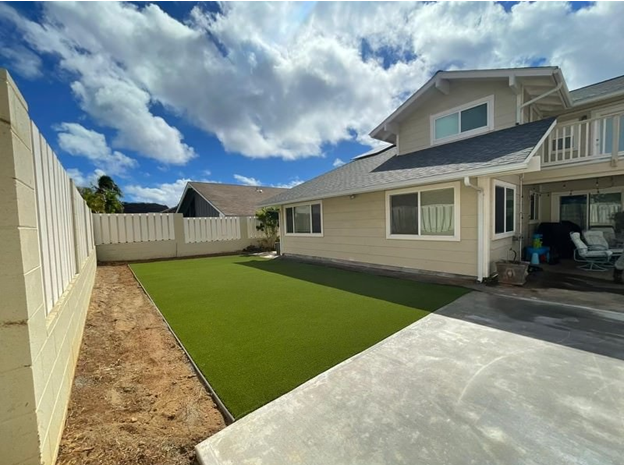
Another environmental advantage of synthetic turf is the reduction in carbon emissions. Traditional grass lawns need to be mowed regularly, and this usually involves the use of gasoline-powered lawnmowers, which negatively impacts air quality by emitting carbon dioxide and other pollutants. These machines emit carbon dioxide and other pollutants, contributing to air pollution and global warming. The carbon footprint of a well-manicured natural lawn is higher than one might expect when accounting for emissions from lawn equipment, water usage, and chemical treatments.
Synthetic turf requires no mowing, trimming, or edging, which means no emissions from gas-powered tools. Over time, this can significantly lower the carbon footprint of maintaining a green space. In addition, the reduced need for maintenance equipment translates to less fuel consumption, further decreasing the environmental impact.
Soil Erosion Prevention
Erosion is a common issue with natural grass, especially in areas with heavy foot traffic or on sloped terrains. When the grass is overused or improperly maintained, it can wear down, exposing the soil and leading to erosion. Soil erosion not only depletes the land of valuable nutrients but also contributes to water pollution, as sediments are carried into water bodies.
Synthetic turf can help prevent soil erosion because it provides a stable surface that does not wear out easily. Whether installed on a flat lawn or a sloped area, synthetic grass stays in place, protecting the soil underneath. This can be particularly beneficial in public parks, playgrounds, or sports fields where natural grass may struggle to withstand continuous use.
Year-Round Green Appearance with Synthetic Turf
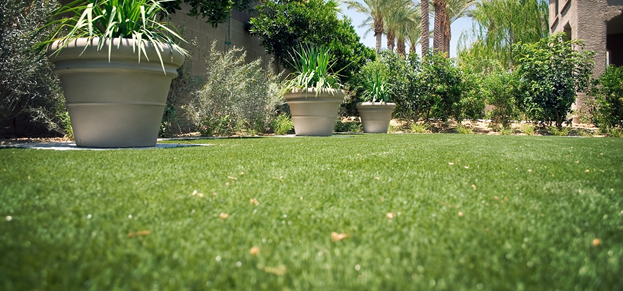
Maintaining a green lawn throughout the year is a challenge with natural grass. Seasonal changes, weather conditions, and maintenance issues can cause grass to turn brown, patchy, or die off completely. This often leads to increased water usage, fertilizers, and even replanting efforts, all of which have environmental costs. A synthetic lawn remains green and vibrant all year round, offering low maintenance and aesthetic benefits regardless of the weather or season.
This constant aesthetic appeal reduces the need for additional resources to keep the area looking attractive. Furthermore, synthetic turf can maintain its appearance in areas where natural grass would not typically thrive, such as in shaded spots or areas with poor soil quality. This makes it a versatile and environmentally friendly option for diverse settings.
Durability and Longevity
One of the reasons synthetic turf is considered environmentally beneficial is its durability and longevity. High-quality synthetic turf can last for many years, often over a decade, with minimal maintenance. Unlike natural grass, which may need to be replanted, reseeded, or patched frequently, artificial turf requires specific production processes involving toxic chemicals but demands minimal water for maintenance, promoting its benefits for water conservation and cost savings in drought-affected regions.
The long lifespan of synthetic turf means that fewer resources are used in the long run. There is no need for repeated planting, watering, or chemical treatments, which makes it a more sustainable option. By investing in synthetic turf, property owners are making a long-term choice that reduces the environmental impact associated with traditional lawn care.
Reduction in Water Runoff
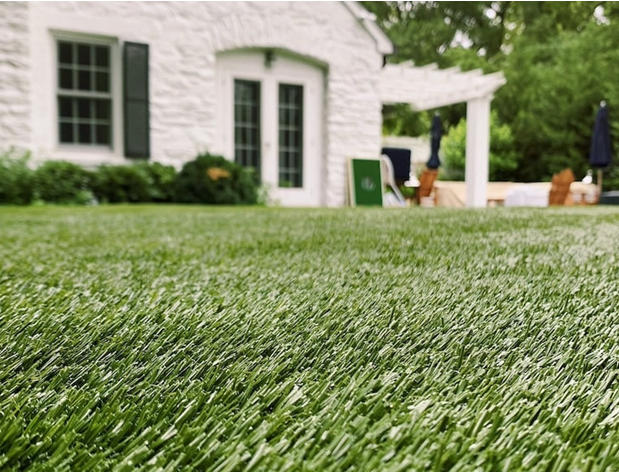
Natural grass lawns, particularly those treated with fertilizers and pesticides, can contribute to water runoff that carries chemicals into storm drains, rivers, and other water bodies. This runoff can lead to water pollution, negatively affecting aquatic ecosystems. Synthetic turf systems are often designed with efficient drainage systems that minimize runoff.
When rainwater falls on synthetic turf, it drains through the material and into the soil without carrying harmful chemicals. This process reduces the risk of pollutants entering the water system. Some synthetic turf installations are even designed to harvest and recycle rainwater, further enhancing water conservation efforts.
Waste Reduction
The environmental benefits of synthetic turf, including artificial lawns, also extend to waste reduction. Consider the amount of waste generated from maintaining a natural lawn: grass clippings, bags of fertilizers, pesticide containers, and more. These items often end up in landfills, adding to the growing problem of waste management. By switching to synthetic turf, you can significantly reduce the amount of waste produced.
Furthermore, many manufacturers are now creating synthetic turf products using recycled materials. This practice reduces the need for new raw materials and helps in recycling plastics that would otherwise contribute to pollution. Choosing recycled or recyclable synthetic turf options can further enhance the environmental benefits.
Supporting Urban Heat Reduction
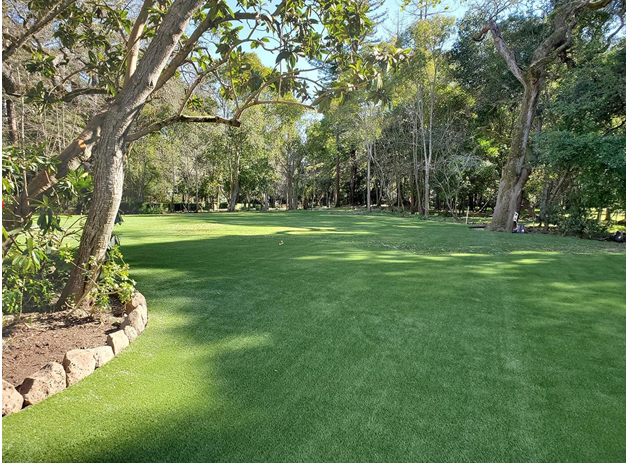
Urban areas often face the challenge of the “heat island” effect, where concrete, asphalt, and other surfaces absorb and retain heat, making cities hotter than their surrounding rural areas. Natural grass can help mitigate this effect, but maintaining large green spaces in urban environments can be water-intensive and impractical. Artificial turf fields, however, are known for their heat retention properties, which can exacerbate surface temperatures and contribute to heat-related illnesses, particularly for children. Despite this, synthetic turf with heat-reflective properties can also contribute to reducing the heat island effect.
Some modern synthetic turf systems are designed with cooling technologies that help keep the surface temperature lower, making it more comfortable to walk or play on during hot days. While it may not cool the area as effectively as natural grass, it still plays a role in reducing overall temperatures in urban landscapes, especially in places where maintaining natural grass isn’t feasible.
Biodiversity Preservation with Natural Grass
Traditional lawn care practices can disrupt local ecosystems and raise significant health and environmental concerns. The use of pesticides and fertilizers often harms beneficial insects, pollinators, and other wildlife that contribute to a healthy ecosystem. Overuse of water can also deplete local water sources, affecting biodiversity in the area. By opting for synthetic turf, property owners can create a low-maintenance green space without disrupting the local wildlife.
While synthetic turf itself does not host as many insects and animals as natural grass, its installation can be part of a broader landscape design that includes native plants, flowers, and shrubs. This can help create a balanced ecosystem that supports local biodiversity without the intensive care that a natural grass lawn would require.
Turf Options for Water Conservation

When it comes to choosing a turf option for water conservation, there are several factors to consider. Artificial turf is a popular choice due to its low water requirements and durability. However, it’s essential to select a high-quality artificial turf that is designed for water conservation. Look for turf options made from recycled materials, which can help reduce waste and minimize the environmental impact of production. Some popular turf options for water conservation include:
- Synthetic turf made from recycled plastic
- Artificial turf with built-in drainage systems
- Natural grass alternatives, such as succulent gardens or drought-resistant plants
Water Conservation Tips
In addition to choosing the right turf option, there are several water conservation tips to keep in mind:
- Install a rainwater harvesting system to collect and reuse rainwater for irrigation
- Use drought-resistant plants and flowers in your landscaping
- Implement a smart irrigation system that adjusts watering schedules based on weather conditions
- Use a broom or leaf blower to clean artificial turf instead of using water
Choosing the Right Turf for Your Needs
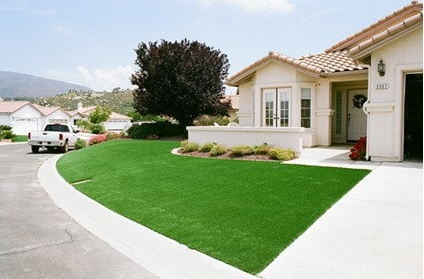
When selecting a turf option, it’s essential to consider your specific needs and preferences. Artificial turf is a popular choice for many homeowners and businesses due to its low maintenance requirements and durability. However, natural grass may be a better option for those who prioritize aesthetics and environmental benefits. Consider the following factors when choosing the right turf for your needs:
- Climate and weather conditions
- Maintenance requirements and budget
- Aesthetic preferences and desired appearance
- Environmental concerns and sustainability goals
Maintenance and Upkeep
Proper maintenance and upkeep are crucial to extending the lifespan of your turf and ensuring its continued performance. For artificial turf, regular maintenance includes:
- Brushing the turf to maintain its appearance and prevent matting
- Cleaning the turf with a broom or leaf blower to remove debris
- Inspecting the turf for damage or wear and tear
- Performing regular repairs and replacements as needed
For natural grass, regular maintenance includes:
- Mowing and trimming the grass to maintain its appearance and promote healthy growth
- Watering the grass regularly, but avoiding overwatering
- Fertilizing the grass to promote healthy growth and prevent pests and diseases
- Aerating the soil to improve drainage and reduce soil compaction
The shift towards synthetic turf is not just about convenience and aesthetics; it’s also about making environmentally conscious decisions. By choosing synthetic turf, property owners can conserve water, reduce carbon emissions, minimize the use of harmful chemicals, and contribute to a cleaner, greener environment. The durability, low maintenance, and adaptability of synthetic turf make it an eco-friendly alternative that addresses many of the environmental challenges associated with traditional lawns.
Whether for a residential lawn, a sports field, or a public park, synthetic turf offers a sustainable solution that balances environmental benefits with practical advantages. As more people become aware of the ecological impact of their choices, synthetic turf is likely to continue growing in popularity as an environmentally responsible option for green spaces.


